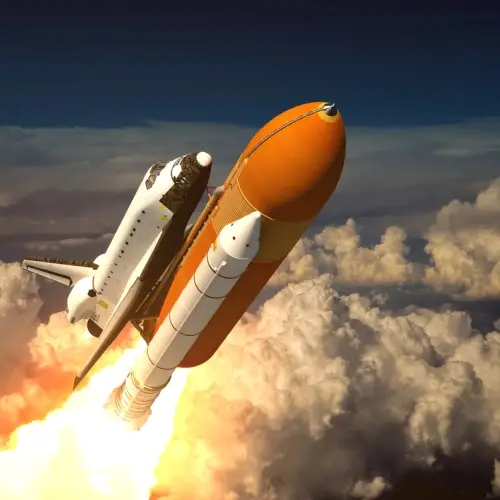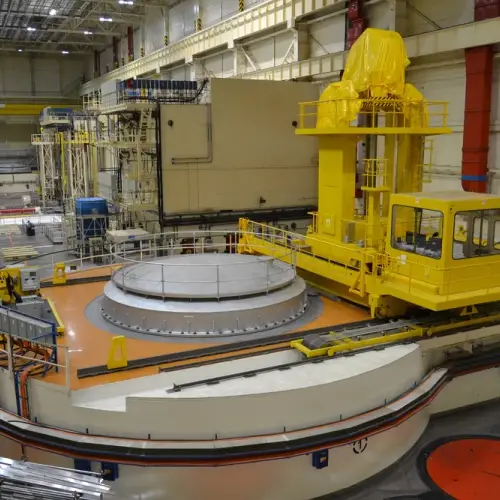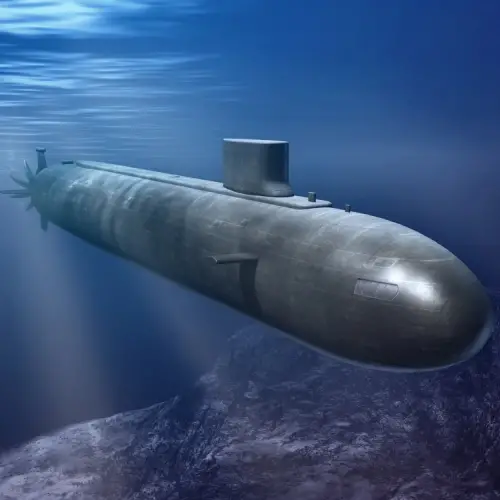
Newton's third law is one of the three fundamental laws formulated by Sir Isaac Newton in his work Principia Mathematica in 1687, which have been the basis of classical mechanics for centuries.
This law states that "for every action, there is an equal and opposite reaction." In other words, when object A exerts a force on object B, object B simultaneously exerts a force of equal magnitude but in the opposite direction on object A.
Although this law may seem simple, it is fundamental to understanding how objects interact in our environment. Let's delve deeper into the concept through detailed examples that relate to this law, which will allow for a deeper understanding of its application.
1. Walk on the ground
 An everyday, direct example of Newton's third law is the act of walking. When you walk, your feet apply a backward force on the ground. This is the "action."
An everyday, direct example of Newton's third law is the act of walking. When you walk, your feet apply a backward force on the ground. This is the "action."
According to Newton's third law, the ground responds by exerting a force in the opposite direction (friction force) i.e. forward. This is the "reaction" which allows you to move forward. Without this reaction force, you simply couldn't move forward. On slippery surfaces, such as ice, friction is minimal, and therefore the ground reaction is weaker, making walking difficult.
In more detailed terms, when the foot pushes backwards, an interaction occurs between the surface of the shoe and the ground. The friction between the two allows the applied force to be sufficient to generate a forward reaction, which propels the body forward. The magnitude of the applied force is the same as the force the ground exerts on the foot, but in the opposite direction.
2. Swimming in the water
 When you swim, you use your hands and feet to push the water backward. This backward push is the "action."
When you swim, you use your hands and feet to push the water backward. This backward push is the "action."
According to Newton's third law, water responds by applying a force of equal magnitude but in the opposite direction, which propels you forward in the water. This reaction force is what allows you to move forward while swimming.
The same principle can be seen in fish. When a fish moves its tail fin to one side, it pushes the water in one direction, and in response, the water pushes the fish in the opposite direction, allowing it to move through the water. Without Newton's third law, neither humans nor animals could swim efficiently.
3. Rocket launch
 A rocket liftoff is a dramatic example of Newton's third law in action. When a rocket takes off, the gases burning in the engines are expelled downward with great force, which constitutes the "action."
A rocket liftoff is a dramatic example of Newton's third law in action. When a rocket takes off, the gases burning in the engines are expelled downward with great force, which constitutes the "action."
According to Newton's third law, the rocket receives a force of equal magnitude but in the opposite direction, that is, upwards, which allows it to take off from the ground and ascend into space.
This phenomenon is best explained in terms of momentum. The expelled gases acquire a large downward momentum, and to conserve the momentum of the total system, the rocket acquires an equal momentum but in the opposite direction, which generates ascent.
This application is crucial in the aerospace industry, since without this principle, it would be impossible to launch vehicles into outer space.
4. Hitting a ball
When you play tennis or soccer, the interaction between the implement (a racket or your foot) and the ball is another example of Newton's third law. When you hit a ball, you exert a force on it. This is the "action." The ball, in turn, exerts a force of equal magnitude but in the opposite direction on the racket or your foot. This is the "reaction."
In a more detailed analysis, when the tennis racket hits the ball, both forces interact for a very short period of time. The reaction force that the ball applies to the racket is felt in the player's hand, which explains why, if you hit a ball very fast, you feel a jolt or vibration.
This exchange of forces is fundamental to any ball sport, and the ability of players to control these forces determines their success in the game.
5. Rowing a boat
 Another interesting example is the act of rowing. When you use the oars to push water backwards, you are applying a backward force on the water. This is the "action."
Another interesting example is the act of rowing. When you use the oars to push water backwards, you are applying a backward force on the water. This is the "action."
According to Newton's third law, the water responds by applying an opposite force on the oars, pushing the boat forward.
Here, the efficiency of the motion depends on the friction and resistance of the water. Water, being a fluid, provides resistance to the oars, which makes it easier to apply the third law. If you were to try to row in the air, where there is not enough resistance, the same effect would not occur, as the air does not provide the reaction needed to move the boat forward.
6. Jump on the ground
When you jump, your legs apply a downward force on the ground, which is the "action." The ground responds by applying an upward force of equal magnitude, which is the "reaction." This reaction force is what propels you upward in the jump.
In this case, the magnitude of the downward force applied to the ground will determine the height of the jump. The greater the force you exert on the ground, the greater the reaction force the ground will apply to you, and therefore, the higher you will jump.
Furthermore, the third law also explains why it is easier to jump on firm surfaces, such as concrete, compared to soft surfaces, such as sand, where the ground cannot generate as strong a reaction.
7. Collision between a car and a wall
Imagine a car crashing into a wall. In this case, the car exerts a forward force on the wall at the moment of impact. This is the "action." The wall, in response, exerts a force of equal magnitude but in the opposite direction on the car, which is the "reaction." This reaction force is what stops the car or even pushes it backward.
In these types of situations, Newton's third law is also crucial to understanding the damage suffered by both the car and the wall. If the car is moving quickly, the collision force is greater, which implies that the reaction of the wall will also be greater. This explains why high-speed accidents tend to be more devastating than low-speed ones.
Furthermore, the forces involved in the collision may be distributed unevenly depending on the structure of the materials involved.
8. Throw a stone
 When you throw a rock, your hand applies a forward force on the rock. This is the "action." The rock, in response, applies a force of equal magnitude but in the opposite direction on your hand. This is the "reaction."
When you throw a rock, your hand applies a forward force on the rock. This is the "action." The rock, in response, applies a force of equal magnitude but in the opposite direction on your hand. This is the "reaction."
Although the stone moves forward due to the applied force, your hand feels the opposite force at the moment of release.
This example can also be related to the concept of momentum. The greater the force you apply to the stone, the faster it will travel. However, the reaction force on your hand will also be greater, which can cause you to feel a pull or resistance when throwing heavy or fast objects.
9. Push a table
When you push a table, you apply a forward force on the table. This is the "action." The table, in turn, exerts a force of equal magnitude but in the opposite direction on your hands. This is the "reaction."
Although the table moves forward due to the force you applied, the reaction force the table exerts on you may cause you to feel resistance, especially if the table is heavy.
If you apply more force, the table will move more easily, since the friction between the table and the floor is more easily overcome. However, the force you feel in your hands will always be equal to the force you apply, although in the opposite direction, which is a clear manifestation of Newton's third law.
10. Landing of an airplane
When an airplane lands, its wheels exert a downward force on the runway due to the weight of the plane. This is the "action."
The runway, according to Newton's third law, exerts an upward force of equal magnitude on the plane's wheels. This is the "reaction," which supports the plane and allows it to decelerate safely.
This process is critical to the controlled stopping of the aircraft. Without this upward reaction force, the aircraft would not be able to brake properly and could run off the runway. Furthermore, during landing, the brakes and the friction between the wheels and the runway generate additional forces that allow the aircraft to come to a complete stop.
11. Chain reaction in a nuclear reactor
 In a nuclear reactor, the fission of heavy nuclei such as uranium-235 generates energy. During this process, when a neutron hits a uranium nucleus, the nucleus splits into two smaller fragments, releasing energy and more neutrons. These neutrons can then collide with other uranium nuclei, triggering a chain reaction .
In a nuclear reactor, the fission of heavy nuclei such as uranium-235 generates energy. During this process, when a neutron hits a uranium nucleus, the nucleus splits into two smaller fragments, releasing energy and more neutrons. These neutrons can then collide with other uranium nuclei, triggering a chain reaction .
In terms of Newton's third law, when the neutron hits the uranium nucleus and splits it, an "action" occurs, which consists of the fragmentation of the nucleus and the release of subatomic particles, such as neutrons and photons (gamma rays). The "reaction" is the force of equal magnitude but in the opposite direction that the fragments of the nucleus exert on the released particles.
These fragments repel each other and separate at high speed, generating the heat needed to convert water into steam and operate the reactor turbines.
12. Nuclear propulsion in submarines and spacecraft
 Some submarines and spacecraft use nuclear reactors to generate power and propel themselves.
Some submarines and spacecraft use nuclear reactors to generate power and propel themselves.
In this case, Newton's third law is also present in nuclear-powered propulsion systems. A nuclear reactor in a submarine uses the energy released by fission to heat water and generate steam, which is then expelled through turbines to generate mechanical energy that propels the vessel.
The third law applies when steam generated by the nuclear reactor is expelled to one side, creating a reaction force to the opposite side that moves the submarine or spacecraft.
This action of expelling steam or gases follows the same principle as jet propulsion, but instead of burning chemical fuel, the energy released by nuclear fission is used to generate thrust.